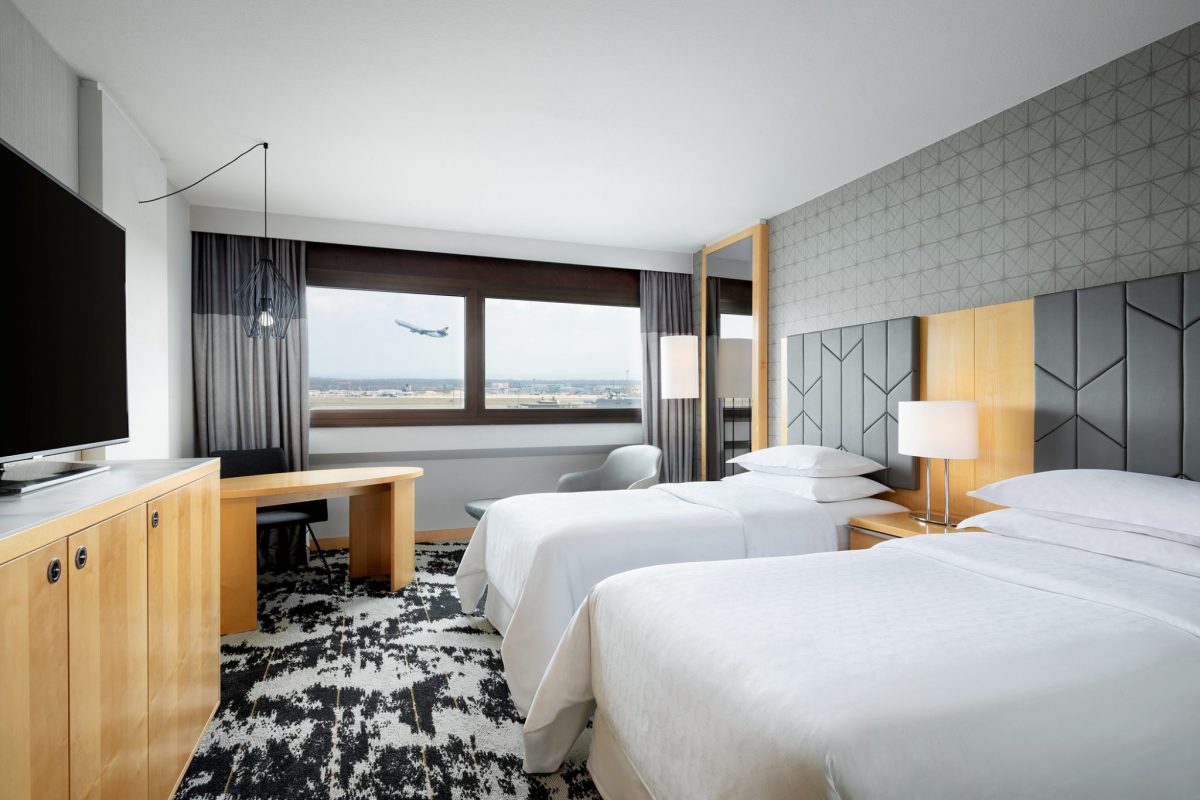Skift Take
The stigma behind airport hotels is changing and with that comes servicing more “destination travelers” versus displaced travelers.
It’s far from back to business as usual for the airport hotels clobbered by a nadir in business travel, especially as the corporate world rethinks its work-from-home strategies.
Hotels in airport markets will return to 2019 levels for occupancy, average daily rate, and revenue per available room — the industry’s key performance metric — by 2024. A return to the new normal in this sector will likely be slow, predicts Kannan Sankaran, a senior director at CBRE Hotels Advisory.
But the lag could ultimately lead to a reinvented experience for travelers who stand to benefit from new and under-construction properties featuring sexy rooftop bars, swimming pools, art galleries, and fitness studios that could make Dwayne “The Rock” Johnson swoon.
And as for that vending machine “dinner” for guests checking in at midnight? Just imagine artisanal cuisine, offered at all hours of the day.
“Given that Hyatt’s recovery continues to be fueled by leisure travel demand and more and more [of those] guests are once again traveling, we look forward to expanding in more airport markets,” said Asad Ahmed, senior vice president of commercial services for Hyatt’s Americas division.
That strategy is primarily focused on the Hyatt Place and Hyatt House brands. You’ll find nary a business center on the homepage for the latter, which boasts “apartment-style spaces” with full-size refrigerators, outdoor commons with fire pits and grills, and craft cocktail bars.
Eliminating the Stigma
It’s all leading to eliminating the stigma of an airport hotel, said Larry Jones, director of sales and marketing for Westdrift Manhattan Beach, which is part of Marriott’s Autograph Collection.
The property’s nine-hole, par-three golf course, outdoor pool complete with cabanas, in-room massage options, and complimentary Solé beach cruisers are all just a 15-minute drive from Los Angeles International Airport.
The uptick in delayed departures and arrivals at LAX and canceled flights due to weather across the U.S. and staffing shortages have all contributed to increased interest in bookings due to disruptions, said Jones. But so has an interest in better pacing. LAX is a popular airport for layovers that are part of longer, international flights.
“These days what we are finding is because time is precious and limited, people are living and working differently,” said Jones. “So if you can have a cool, elevated experience right near the airport you’re already at, why not do that as well?”
Jones expects to attract more travelers thanks to Westdrift’s partnership with TA Connections for displaced travelers and due to a multi-billion dollar modernization project at LAX that’s expected to last through 2023. There are numerous renovations and expansions at major airports across the U.S., which have all faced pandemic-related delays — but all are likely to increase the demand for airport hotel inventory.
Denver International Airport — where the three-phase Jeppesen Terminal Great Hall capital improvement project is slated to finish in 2028 — got a leg up in the airport hotel reinvention game. An attached Westin, Marriott’s brand geared toward fitness and wellness, opened in 2015 and connects directly to Jeppesen.
Being on-site or offering an airport shuttle are key components to defining an airport hotel, said Jason Nuell, Senior Vice President of Premium Brands for Marriott International. But Jones from Westdrift contends that today’s travelers are more about “seeking an oasis,” excluding last-minute disruptions.
No matter what the case, Westin’s mountain views, sound-proof windows, cozy bedding, and farm-to-table cuisine at Grill & vine all defy expectations of the drastic changes that occurred after the Golden Age of plane travel.
According to Jones, that’s when the airport-hotel trope of “$39 a night with no frills, scratchy sheets, and the sound of jets taking off” soared to the front of everyone’s connotation of this kind of hotel stay.
Developers in recent years moved to shed this image from the modern traveler’s mind.
At New York’s John F. Kennedy International Airport, the Golden Age came alive on-site in the form of TWA Hotel, offering up a nostalgic experience that’s like traveling back in time to Kennedy’s Camelot.
Hyatt Place Melbourne Airport in Florida set to open later this year includes a rooftop bar and outdoor pool and will serve as a gateway at Melbourne Orlando International Airport for TUI Airways flights servicing UK travelers bound primarily for nearby theme parks. It’s the first on-site hotel at the Melbourne airport and will service increasing needs based on “positive month-over-month air service trends,” said Ahmed.
Hoteliers are hoping that travel’s recovery will bring a fresh perception of airport hotels that have carried the reputation baggage of being easy overnight stops for airline crews and stranded travelers.
Have a confidential tip for Skift? Get in touch
Tags: business travel, coronavirus, coronavirus recovery, future of lodging, hyatt, loyalty, marriott
Photo credit: Companies like Marriott are boosting amenities offered at their hotels near major airports (pictured: a guest room at the Sheraton near the Frankfurt airport in Germany). Marriott International
